To get the same histogram in ggplot2 you specify the breaks inside scale_x_continuous and binwidth inside geom_histogram.
Additionally, hist and histograms in ggplot2 use different defaults to create the intervals:
hist: right-closed (left open) intervals. Default: right = TRUE
stat_bin (ggplot2): left-closed (right open) intervals. Default: right = FALSE
**hist** **ggplot2**
freq1 Freq freq2 Freq
1 (0,2] 0 [0,2) 0
2 (2,4] 2 [2,4) 2
3 (4,6] 2 [4,6) 1
4 (6,8] 1 [6,8) 2
5 (8,10] 6 [8,10) 2
6 (10,12] 9 [10,12) 7
7 (12,14] 24 [12,14) 17
8 (14,16] 27 [14,16) 26
9 (16,18] 39 [16,18) 31
10 (18,20] 48 [18,20) 46
11 (20,22] 52 [20,22) 43
12 (22,24] 38 [22,24) 57
13 (24,26] 44 [24,26) 36
14 (26,28] 46 [26,28) 52
15 (28,30] 39 [28,30) 39
16 (30,32] 31 [30,32) 33
17 (32,34] 30 [32,34) 26
18 (34,36] 24 [34,36) 29
19 (36,38] 18 [36,38) 27
20 (38,40] 9 [38,40) 12
21 (40,42] 5 [40,42) 6
22 (42,44] 4 [42,44) 0
23 (44,46] 1 [44,46) 5
24 (46,48] 1 [46,48) 0
25 (48,50] 0 [48,50) 1
I included the argument right = FALSE so the histogram intervalss are left-closed (right open) as they are in ggplot2. I added the labels in both plots, so it is easier to check the intervals are the same.
ggplot(data, aes(x = Mos))+
geom_histogram(binwidth = 2, colour = "black", fill = "white")+
scale_x_continuous(breaks = seq(0, 50, by = 2))+
stat_bin(binwidth = 2, aes(label=..count..), vjust=-0.5, geom = "text")

hist(data$Mos,breaks=seq(0, 50, by = 2), labels =TRUE, right =FALSE)

To check the frequencies in each bin:
freq <- cut(data$Mos, breaks = seq(0, 50, by = 2), dig.lab = 4, right = FALSE)
as.data.frame(table(frecuencias))



